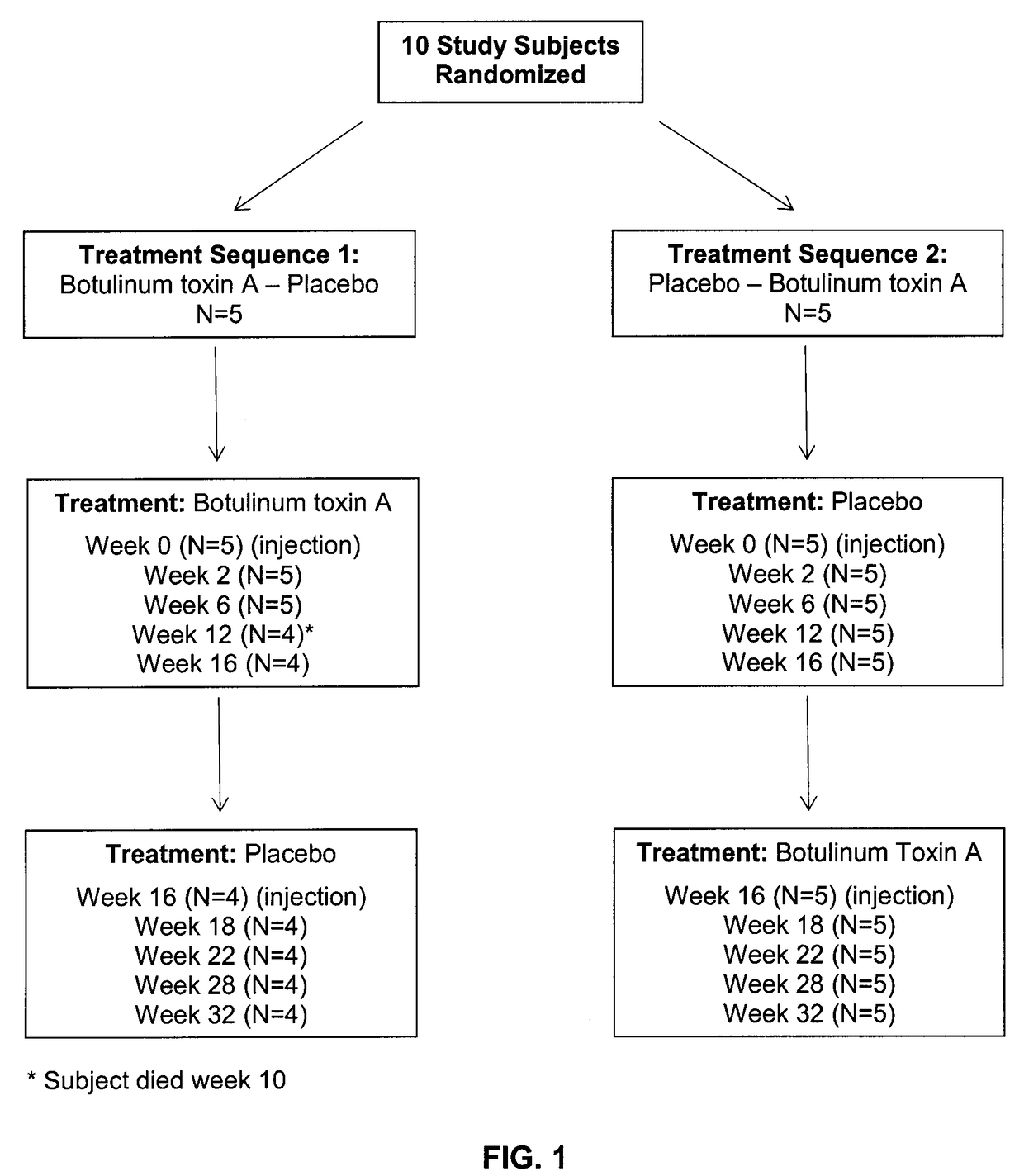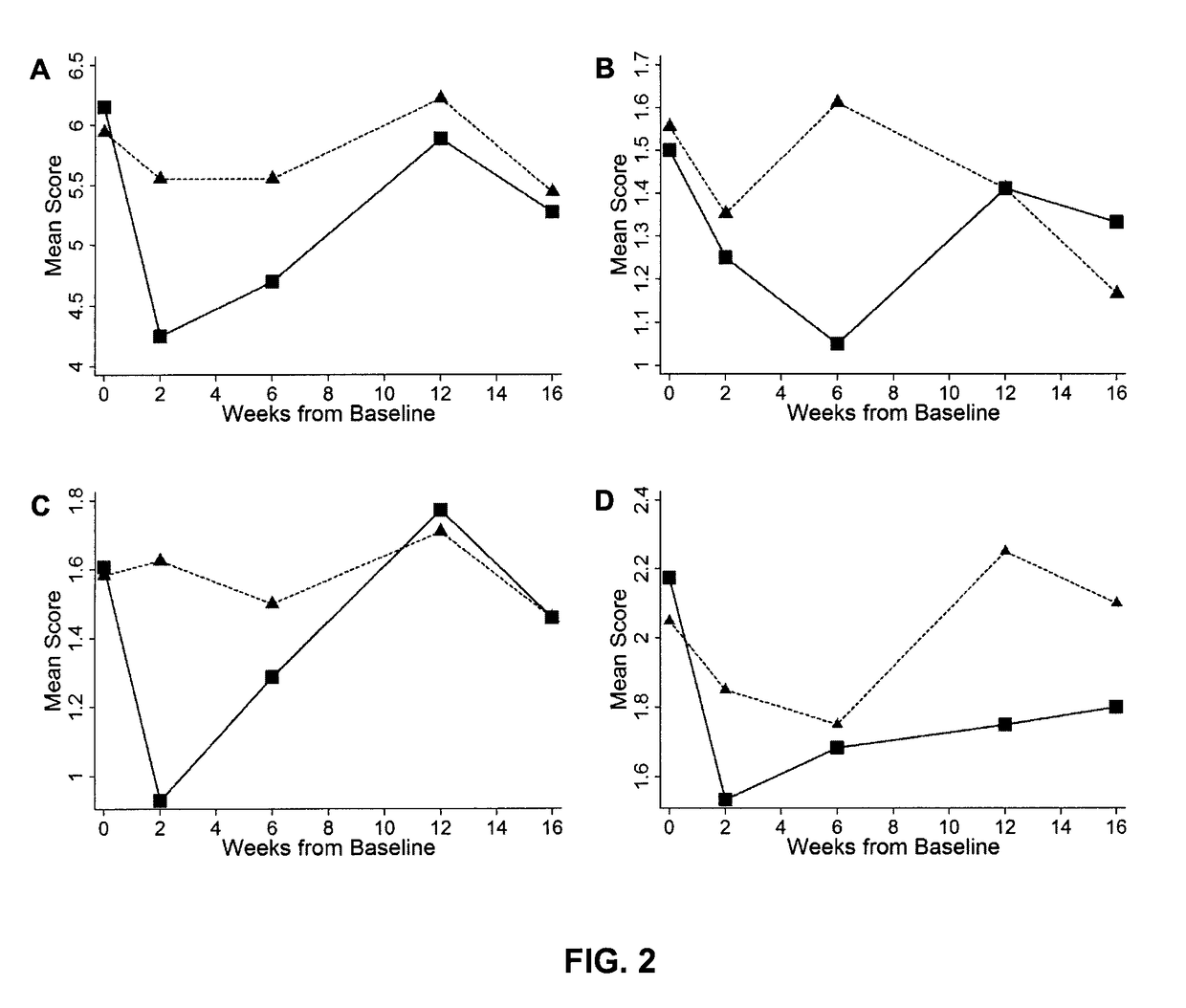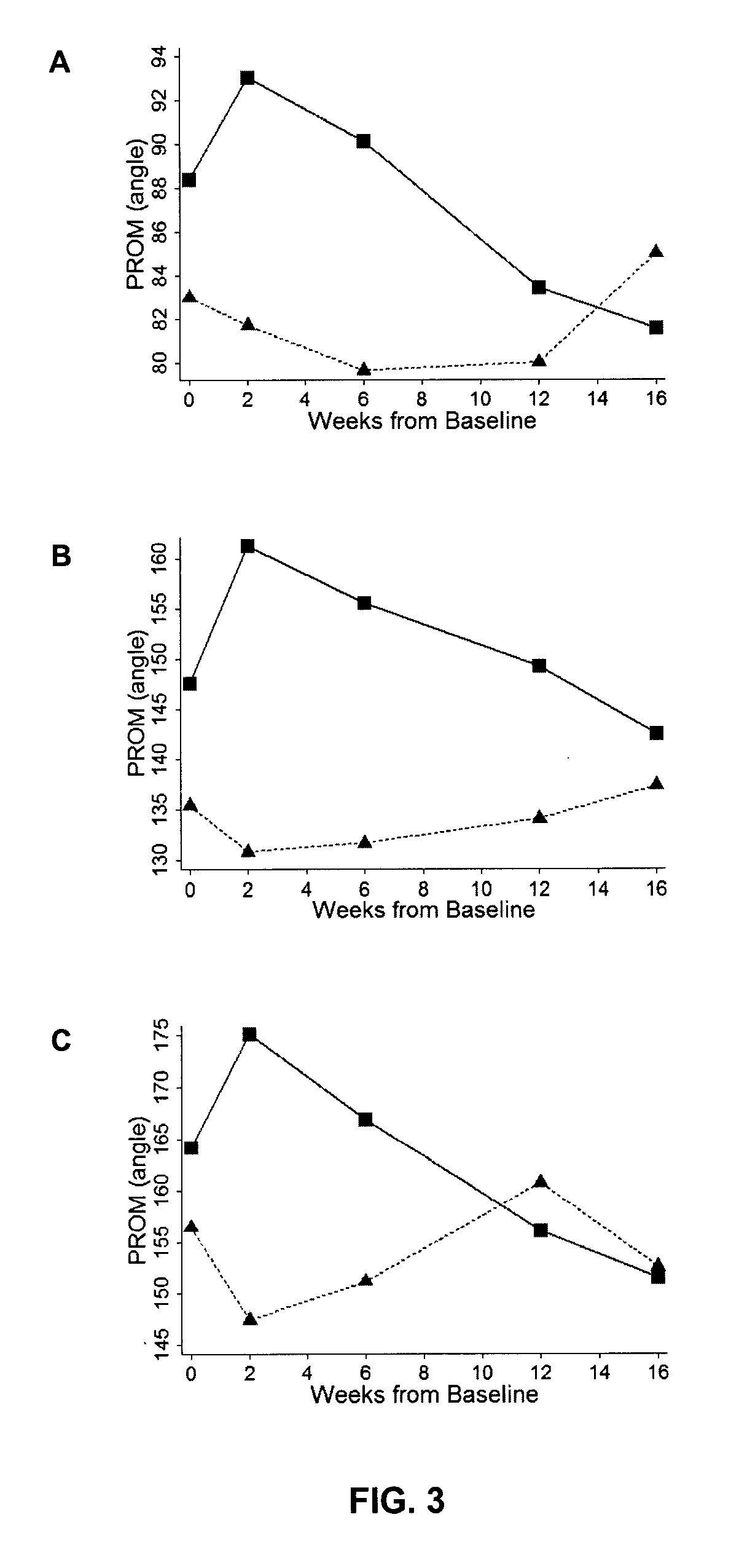Botulinum toxin for use in the treatment of paratonia
a technology of botulinum toxin and paratonia, which is applied in the field of botulinum toxin for use in the treatment of paratonia, can solve the problems of increasing the burden on the caregiver, reducing comfort and quality of life, and accompanied by significant motor disabilities
- Summary
- Abstract
- Description
- Claims
- Application Information
AI Technical Summary
Benefits of technology
Problems solved by technology
Method used
Image
Examples
example
[0057]The study presented below provides evidence that botulinum toxin treatment is capable of reducing involuntary postures and caregiver burden in elderly patients with cognitive impairment (dementia). In particular, the toxin treatment was found to produce significant improvement in the caregiver burden scale (CBS), the primary outcome measure of the study, and increase range of motion around a joint (Passive Range of Motion; PROM).
[0058]Overall, the results obtained suggest that administration of botulinum toxin in elderly people requiring full care as a result of dementia-associated paratonia provides a promising treatment strategy to efficiently and safely improve the patient's quality of live and reduce caregiver burden, and reduce consequences of immobility like skin breakdown, infection, and pressure sores amongst others.
Methods
Subjects
[0059]The study began on January 2011 and ended March 2013. Subjects were eligible for the study if they had severe cognitive impairment as ...
PUM
 Login to View More
Login to View More Abstract
Description
Claims
Application Information
 Login to View More
Login to View More - R&D
- Intellectual Property
- Life Sciences
- Materials
- Tech Scout
- Unparalleled Data Quality
- Higher Quality Content
- 60% Fewer Hallucinations
Browse by: Latest US Patents, China's latest patents, Technical Efficacy Thesaurus, Application Domain, Technology Topic, Popular Technical Reports.
© 2025 PatSnap. All rights reserved.Legal|Privacy policy|Modern Slavery Act Transparency Statement|Sitemap|About US| Contact US: help@patsnap.com



